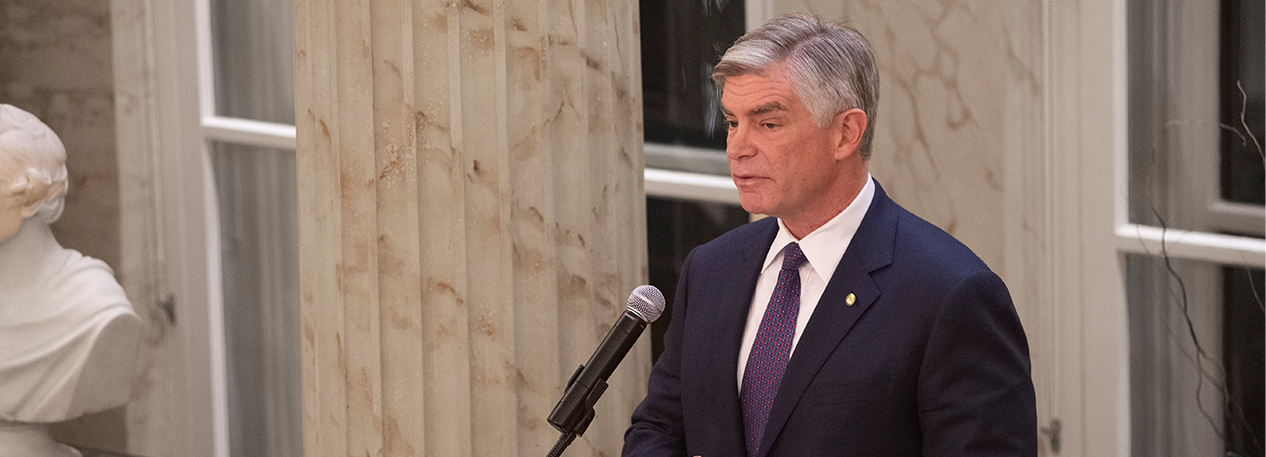For immediate release
Contact: Joey Lee, Media Relations, 215-574-3840
Philadelphia — The Federal Reserve Bank of Philadelphia today celebrates the 50th anniversary of the Manufacturing Business Outlook Survey (MBOS), which was first conducted in May 1968. Often referred to in the marketplace as the “Philly Fed Index,” the MBOS has been produced each month since its inception, making it the first and longest-existing survey of its kind in the Federal Reserve System.
The MBOS is a monthly survey of business activity at manufacturing firms in the Third Federal Reserve District, which includes eastern Pennsylvania, southern New Jersey, and Delaware. Survey participants indicate the direction of change in overall business activity in their firms. The survey gathers data on several economic indicators, such as employment, working hours, new and unfilled orders, shipments, inventories, delivery times, and prices paid and received.
Economists, manufacturers, analysts, and media then use the data from the MBOS to track business cycles, since manufacturing is sensitive to economic expansions and contractions.
“The Philadelphia Fed is excited to celebrate this important milestone for the Manufacturing Business Outlook Survey as we commemorate its 50th year of serving as a valuable indicator of growth in the cyclically sensitive manufacturing sector,” said Michael Dotsey, executive vice president and director of research. “Considered to provide useful economic information to the market, the MBOS has been extraordinarily successful, and in fact, the popularity of this survey has inspired other Reserve Banks to start producing their own regional surveys.”
He continued, “And we have continuously sought to improve the survey. Over the last three years, we have begun asking respondents to provide a forecast for their own prices and inflation four times a year. We believe that these data will provide a unique perspective on inflation expectations in the United States.”
The significance of the MBOS among Wall Street traders and analysts is noteworthy — this survey has long been viewed as a barometer for U.S. manufacturing and for the overall regional and national economy.
“Regional indexes like the Philly Fed are invaluable to us because they give an early read on the national economy,” said Tom Porcelli, managing director and chief U.S. economist at RBC Capital Markets. “What makes the Philly Fed Index unique is the rich amount of history behind it. The index has gone through at least eight [business] cycles, and I don’t think any other regional index goes back that far. Bravo to the Philadelphia Fed for maintaining it for so long.”
When the MBOS was first created by former Philadelphia Fed President Edward Boehne, he showed tremendous foresight when designing the survey. He understood the importance of providing real-time data before the end of the month in order for the survey to be timely and relevant to the current market. Because it is one of the earliest factory surveys out in any given month, the MBOS is viewed by some economists as a leading indicator for the market-moving Institute for Supply Management’s manufacturing index that comes out after the month has ended.
“This is hugely important,” continued Porcelli. “It is a ‘live’ index. You can look at what’s going on in the month you are trying to analyze.”
The MBOS was mostly used for internal briefings and monetary policy discussions when it was first introduced. Although interest in the survey has grown over the years, the survey’s methodology and timing have remained much the same. Apart from the special questions section added in the early 1990s that varies in topic from month to month, the survey has remained largely identical to the original published in 1968.
“Fifty years later, the MBOS is still well respected because it has a long history, it has a quality panel of participants, and it surveys a cyclically sensitive sector,” said Dotsey.
The latest MBOS is available here.
The Federal Reserve Bank of Philadelphia helps formulate and implement monetary policy, supervises banks and bank savings and loan holding companies, and provides financial services to depository institutions and the federal government. It is one of the 12 regional Reserve Banks that, together with the Board of Governors in Washington, D.C., make up the Federal Reserve System. The Federal Reserve Bank of Philadelphia serves eastern Pennsylvania, southern New Jersey, and Delaware.
